Visit Neelakanteshwara Temple To Indulge In Divine Aura
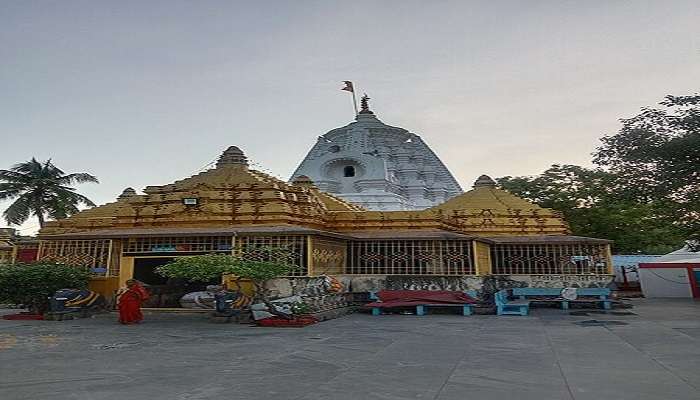
Nestled amidst the serene terrains of India, the Neelakanteshwara Temple is a sublime testament to the country’s rich cultural heritage and spiritual grandeur. This ancient temple, dedicated to Lord Shiva, is a marvel of intricate architecture and divine artistry, drawing devotees and history enthusiasts alike. As you step into the sanctum of the Neelakanteshwara Temple, you are greeted by an aura of tranquillity and reverence. The temple’s towering gopuram (gateway tower), adorned with elaborate carvings and vibrant sculptures, narrates stories from ancient Hindu scriptures. Beyond its spiritual significance, the Neelakanteshwara Temple is an architectural marvel. So, let’s go on a journey through the hallowed halls of the Neelakanteshwara Temple, exploring its historical essence, spiritual ambiance, and architectural splendor.
About Neelakanteshwara Temple

The Neelakanteswara Temple in Nizamabad is dedicated to Lord Shiva and Parvati, known as Neelakanta. Ancient stories say that even Lord Brahma worshipped Lord Shiva here, making this temple very important among all Shiva temples in India. It’s one of the country’s oldest and most respected temples, attracting devotees from far and wide, especially during the Shiva Ratri Festival.
The temple’s architecture and spiritual atmosphere show its profound cultural and religious importance, giving visitors a peaceful and spiritually enriching experience in its historical setting. Neelakanteswara Temple draws pilgrims year-round as a revered Shiva temple, especially during Shiva Ratri. This festival honours Lord Shiva with rituals and celebrations that bring devotees for prayer and offerings, celebrating Lord Neelakanta’s divine presence.
Must Read: Mecca Masjid Hyderabad
History Of Neelakanteshwara Temple
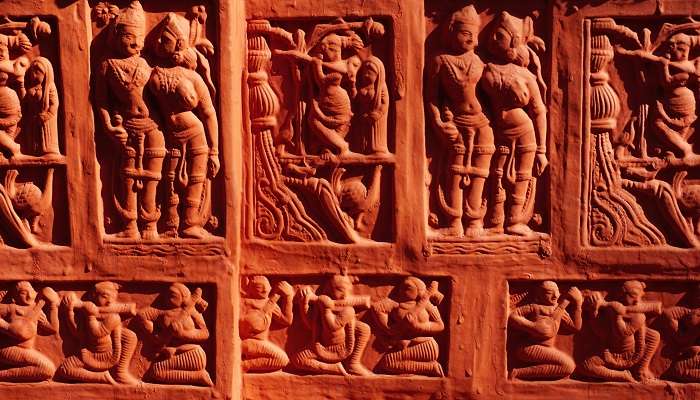
The story of Lord Shiva drinking the Halahala poison during the churning of the cosmic ocean, known as Samudra Manthan, is quite popular in Hinduism. The poison emerged as a byproduct of this churning and threatened to harm the universe. To protect all beings, Lord Shiva volunteered to consume the poison. However, realizing its potency, Goddess Parvati quickly placed her hand on Shiva’s throat to prevent the poison from descending further into his body. As a result, Shiva’s neck turned blue due to the effect of the poison, earning him the name “Neelakantha,” which means the blue-throated one.
Hence, this temple is called Neelakanteswara Temple. The Linga symbolizes Shiva’s divine presence and is considered auspicious and powerful in Hindu tradition. It represents the formless aspect of God, who is believed to create and dissolve the universe. The temple’s fort was initially built during the 10th century by the Rashtrakuta kings and later occupied by various rulers, including Allauddin Khilji and the Bahmani Sultanate.
Best Time To Visit & Pooja Timings
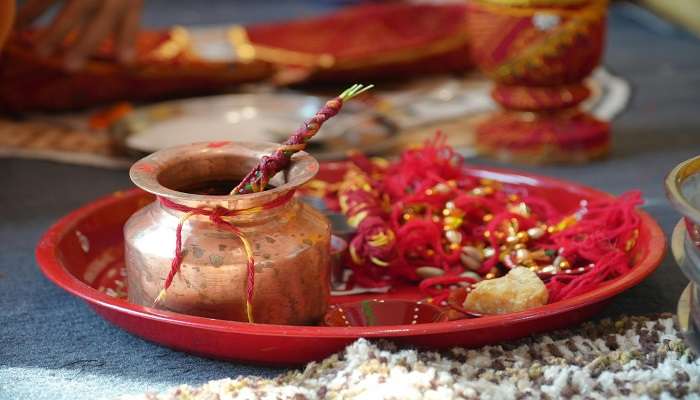
The Neelakanteshwara Temple is open for worship every day from 6:00 AM to noon and from 5:00 PM to 8:00 PM. You can visit and offer prayers during these times throughout the week.
The best time to visit the temple is during the winter season, from September to February. During these months, the weather is cooler and more comfortable for sightseeing and worship. In contrast, the summer months from April to June are very hot, with temperatures reaching up to 43°C during the day and around 35°C at night. The monsoon season, from August to October, brings rainfall to the region.
Suggested Read: Tourist Places Near Hyderabad Within 500 km
Top Places To Visit Nearby Neelakanteshwara Temple
Several attractions nearby Shri Jagannath Temple Hyderabad are worth visiting. Some top places to visit around are:
1. Alisagar
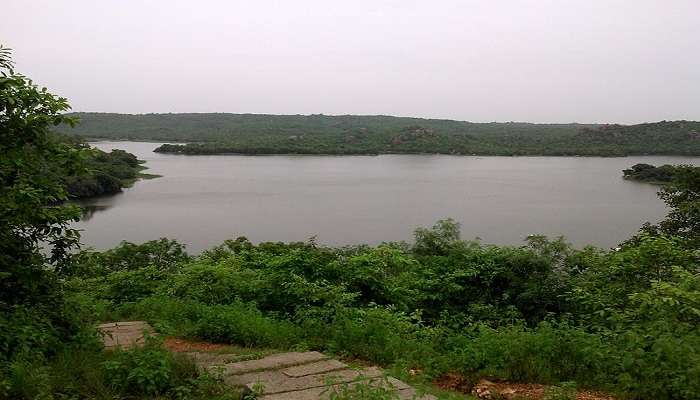
Alisagar is a beautiful spot about 13 kilometres from Nizamabad in the Telangana state of India. It is a popular picnic destination known for its scenic reservoir, gardens, and the Alisagar Deer Park. Tourists can enjoy a relaxing day amidst nature, exploring the gardens with various flowers, spotting deer at the park, or taking a boat ride on the lake. The park also offers trekking and water sports facilities, making it an excellent place for a family outing or a weekend getaway.
Distance From Temple: 15.2 km
Timings: 24 hours
2. Nizamsagar Dam
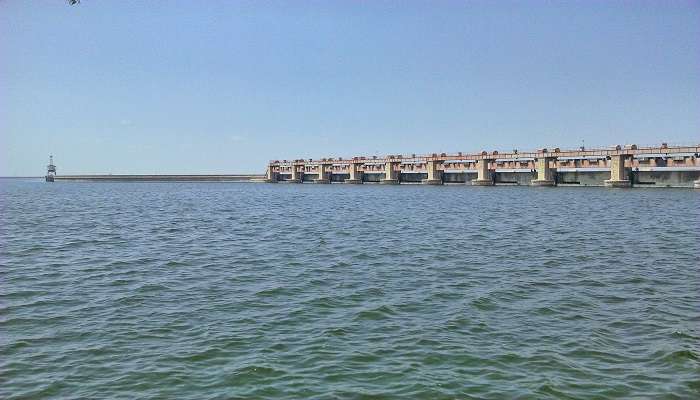
Nizamsagar is a reservoir in Telangana, India, built across the Manjira River, a tributary of the Godavari River. The dam is a historic landmark built in 1923 by the then-ruler of Hyderabad. It is the oldest dam in Telangana and provides drinking water to Hyderabad and Secunderabad. Tourists can enjoy the scenic beauty of the lake created by the dam, a popular spot for boating and fishing. The area around the dam also includes several temples and other historical sites.
Distance From Temple: 13.6 km
Timings: 7:30 AM to 8 PM
Suggested Read: Basara Saraswathi Temple
3. Ashoksagar

Ashoksagar, located near Nizamabad, is a popular tourist destination known for its serene atmosphere and scenic beauty. The reservoir, formed by the Ashok Sagar Dam on the Manjira River, offers picturesque views and opportunities for boating and sightseeing. Tourists can indulge in activities such as boating on the reservoir, exploring nearby attractions like the Pochampadu Dam, and enjoying picnics amidst the lush surroundings. Ashoksagar provides a peaceful retreat for nature lovers and those seeking a tranquil getaway in Telangana’s countryside.
Distance From Temple: 75.2 km
Timings: 24 hours
How To Reach The Neelakanteshwara Temple?

To reach the Neelakanteshwara Temple in the Nizamabad district, you have several options:
By Road
Two National Highways pass through Nizamabad: NH 44, which connects Kanyakumari to Varanasi, and NH 16, starting from Nizamabad and passing through Karimnagar to Jagadalpur in Chhattisgarh. The Telangana State Road Transport Corporation (TSRTC) operates approximately 700 buses daily from the district headquarters.
By Rail
The primary railway station serving Nizamabad district is Nizamabad Railway Station, located on the Secunderabad-Manmad section of the Hyderabad Division within the South Central Railway Zone (SCR).
By Air
The nearest airport to those travelling by air is Rajiv Gandhi International Airport in Shamshabad, Hyderabad. This airport serves domestic and international flights and is approximately 200 kilometres south of Nizamabad.
Further Read: Temples In Telangana
The Neelakanteshwara Temple in Nizamabad symbolizes the city’s rich culture and spiritual importance. As you leave this sacred site, you’ll carry with you a sense of tranquillity and a deeper appreciation for the region’s traditions. Are you excited to discover Nizamabad? Make sure to visit this special temple and other fascinating places. Plan your trip to Hyderabad now to experience its intriguing history, spirituality, and friendly locals. Your adventure awaits!
For our editorial codes of conduct and copyright disclaimer, please click here.
Cover Image Credit: Muralikrishna m for wikimedia commons
Frequently Asked Questions About Neelakanteshwara Temple
Is photography allowed inside the Neelakanteshwara Temple?
Photography policies may vary, but generally, photography is allowed outside the temple complex. Inside the sanctum sanctorum and during rituals, photography, and mobile phones may be restricted to maintain the sanctity and peace of the place.
Are there any festivals celebrated at the Neelakanteshwara Temple?
Yes, the temple hosts several festivals throughout the year. The most prominent ones include Shivaratri, Rathasaptami (Chariot festival), and various rituals during important Hindu occasions. These festivals attract devotees who come to participate in prayers, rituals, and cultural celebrations.
What is the significance of the name 'Neelakanteshwara'?
Neelakanteshwara refers to Lord Shiva, who is depicted as having a blue throat. This blue hue is attributed to his consumption of the Halahala poison during the churning of the cosmic ocean, as mentioned in Hindu mythology.
Can non-Hindus visit the Neelakanteshwara Temple?
Yes, the Neelakanteshwara Temple welcomes visitors of all faiths and backgrounds to experience its architecture, history, and spiritual ambiance. However, visitors are expected to respect the temple's customs and traditions.
Are there facilities available for prasad (offering) distribution at the Neelakanteshwara Temple?
Yes, the temple usually provides facilities for devotees to offer prasad to the deity and receive it back as a blessed food offering. Prasad distribution often occurs within the temple premises during specified times, ensuring devotees can partake in this sacred tradition.
Govind Dev Temple Lotus Temple Phimeanakas Temple

We all have to begin somewhere. This is where I start and I hope that my writings encourage you to begin. To new beginnings and conquering new places!











